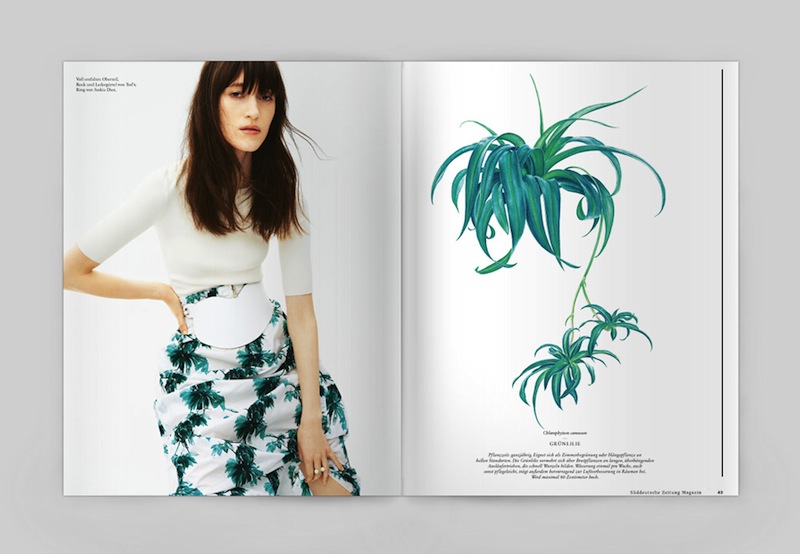Painting Wet-Looking Salamander with Masking Fluid
To be honest, the idea of painting something so slick and glossy for the first time was frightening me. The "bumpy" skin of the salamander required many tiny "white" spaces (highlights) and, at the same time, a smooth gradation between shadow and mid-tones, which is harder to paint than a surface that is glossy but smooth and even. Moreover, I thought white gouache was not the correct answer. A few tiny dots of white gouache could be unnoticeable but for this focal-point highlight, the opacity and thickness of gouache would look totally out of place with the transparent watercolour. It can make the painting look shabby.Since I mostly paint using wet into wet technique, my initial thought was using masking fluid to protect the intricate highlights of the salamander's skin while spreading paints effortlessly.
 |
| Masking fluid on the yellow markings and white highlight |
Painting salamander deepened my understanding of using masking fluid. Different from using masking fluid for separate parts (e.g. my previous work: masking stamens from petals of cherry blossom), creating highlight is trickier. The reasons were (1) the highlight had to look like it actually came from the same colours with the base; (2) sometimes it has a slightly different colour as a reflection from surrounding; (3) it has varied edges, such as hard/crisp, soft, and sometimes lost edges.
1. For parts in different colours, I prefer to paint them first before applying the masking fluid, e.g., the yellow markings of the salamander. It reduces the risk of hurting my paper's surface because even a little damage on the surface will be amplified when using wet into wet (my main technique).
2. Consider the sequence of how you remove the masking fluids before you apply them, because the cohesiveness of dried masking fluid will pull everything off at the same time. Case in point: the masking fluid of the highlight and the yellow marking were prevented from coming into contact with each other. In so doing, I could keep the masking of yellow marking stay on until the painting was done whereas the highlight was removed quite earlier.
3. Highlight is actually not a pure white and some edges are soft and lost. Thus, I removed the masking fluid of the highlight after the first 3-4 layerings of paints. If I removed it in the late/final stage, I would get hard-edged, too contrasting, and unnatural highlight. After having it removed, I carefully added the next paint part by part to keep the highlight and create the soft and lost edges.
[My tips]: eradicator brush can soften the edges. I used my 1/8" sized flat brush the same way I did here and here.
And below is the final illustration after I painted cast shadow under the amphibian.
Painting Furry Ibex with New 'Spiky' Comber Brush
Different from my first experience of painting furs in my earlier illustration of brown bear for a wine label, this new commission required a more photo-realistic result, with more varied colours and contours of the fur. And I was happy that I bought a new 'Spiky Comber' from Rosemary&Co. I think it is an advanced version of the flat comber brushes I used before. Compared to my flat comber brush, the curved edge of the new 'spiky' comber brush creates not only many tiny strokes at once but also varied lines. With 1/4 sized brush, I could vary the amount of lines in 1/4 inch or 6.35 mm width of space, from many tiny lines (>15) to 1-2 lines if I lifted the brush.1. I painted the general shape of the ibex with wet into wet washes using round brush. It didn't have to be perfect and precise, but clear enough to indicate the contour of the furs. *My apologies, I didn't take picture earlier. The lower and left side of the ibex no.1 are what I meant with the initial wet washes.
2-3. After the painting was dry, I built up the fur with dry brush using new 'spiky' comber brush and sometimes round brush. *Further info about the technique can be read in my previous post.
[My tips] [1] I sometimes added wet into wet washes upon the layers of the dry-brush to darken some areas more quickly or to slightly soften the dry-brush edges. It would not lift up the previous layers of paint if you did it on a completely dried layers of dry brush and only brushed the wet washes lightly.
[2] If your paper is as forgiving as mine (Fabriano Artistico HP 300 gsm), you can even enhance the highlight by softly erasing the paints using eradicator' brush. I wet the area to be removed with clean water by stroking a damp brush gently, then pat the pigment away with tissue (I wrote the technique here).
I think this post is already too long. I hope you find it useful. And here is how the illustrations look on the magazine's layout. Enjoy!

















